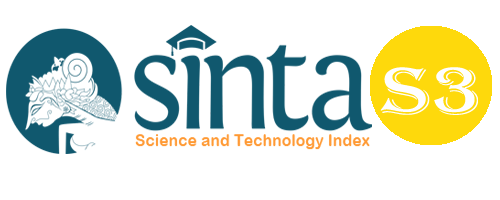Diversion as an Instrument to Terminate Criminal Investigations Conducted by Children Through the Issuance of SP3 by Investigators
Abstract
This research is the result of research on diversion as an instrument for stopping criminal investigations through the issuance of SP3 by investigators against Children in Conflict with the Law (AKH) at the investigation stage. This research was conducted using qualitative descriptive research methods and analytical descriptive methods, namely research methods by describing data collected through library research, where researchers studied and took data from various literatures in the form of books, official reports, scientific journals, articles, and news. The results of the study show, firstly, if the diversification is successful and the results of the diversion agreement are stated, based on the decision of the District Court, the Investigator in this case the South Jakarta Metro Police issues an Investigation Termination Order (SP3) after the diversion agreement is fully implemented. Second, Article 109 paragraph (2) of the Criminal Procedure Code has limitedly stated the reasons that can be used by investigators as the basis for stopping an investigation, namely: (i) there is not enough evidence; (ii) the incident turned out to be not a criminal act; or (iii) the investigation is terminated by law. As such, diversion has no relevance to the termination of the investigation or diversion cannot be used as a reason to stop the investigation. Because diversion with the termination of the investigation is a different matter, both in terms of the reasons that form the basis for its implementation and the process.
Keywords
Full Text:
PDFReferences
Anthoni, M., Pettanasse, S., & Nashriana, N. (2019). Reformulasi Pasal 109 KUHAP tentang Penghentian Penyidikan Sebagai Bagian Dari Upaya Rekonstruksi Terhadap Hukum Pidana Indonesia. Sriwijaya University.
Atmasasmita, R. (1996). Sistem Peradilan Pidana (Criminal Justice System) Perspektif Eksistensialisme Dan Abolisionalisme. Bina Cipta.
Gultom, M. (2014). Perlindungan Hukum Terhadap Anak Dalam Sistem Peradilan Pidana Anak di Indonesia (Cetakan ke-IV). Refika Aditama.
Harahap, M. Y. (2009). Asas-Asas Hukum Pidana. Rineka Cipta.
Listyarini, D. (2017). Juvenile Justice System through Diversion and Restorative Justice Policy. Diponegoro Law Review, 2(1), 168–184.
Marlina. (2009). Peradilan Pidana Anak di Indonesia: Pengembangan Konsep Restorative Justice. Refika Tama.
Mubarak, R., & Trisna, W. (2012). Buku ajar hukum kejahatan anak. Medan Area University Pres.
Pratiwi, P.F.P., Suprayitno, and Triyani. (2020). Existence of Customary Law through Comparative Education between Dayak Ngaju Customary Law and National Law. Budapest International Research and Critics Institute-Journal (BIRCI-Journal) Vol 3 (2): 712-717.
Purba, I.G., and Syahrin, A. (2019). Demand against Law and Using Authority in Corruption Criminal Action. Budapest International Research and Critics Institute-Journal (BIRCI-Journal) Vol 2 (4): 194-206.
Putra, F. A. (2022). Penerapan Diversi Dalam Penyidikan Tindak Pidana Kekerasan Fisik Yang Dilakukan Anak Di Bawah Umur (Studi Pada Satreskrim Polres Metro Jakarta Selatan). Universitas Indonesia.
Soekanto, S. (2005). Faktor-Faktor Yang Mempengaruhi Penegakan Hukum. Raja Grafindo Persada.
Soesilo, R. (1980). Taktik dan Teknik Penyidikan Perkara Kriminil. Politeia.
Soetedjo, W. (2012). Hukum Pidana. Refika Aditama.
Suprayogo, & Tobroni, I. (2001). Metode Penelitian Sosial Agama (Cetakan ke-1). Remaja Rosdakarya.
Tumanggor, F., Muazzul, and Zulyadi, R. (2019). Handling of Narcotics Child Victims in Child Special Coaching Institutions Class I Tanjung Gusta, Medan. Budapest International Research and Critics Institute-Journal (BIRCI-Journal) Vol 2 (4): 50-55.
Zulfa, E. A. (2009). Keadilan Restoratif. FHUI.
DOI: https://doi.org/10.33258/birci.v6i1.7404
Article Metrics
Abstract view : 32 timesPDF - 6 times
Refbacks
- There are currently no refbacks.

This work is licensed under a Creative Commons Attribution-ShareAlike 4.0 International License.

This work is licensed under a Creative Commons Attribution-ShareAlike 4.0 International License.

_.gif)

















_.gif)



